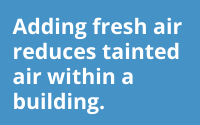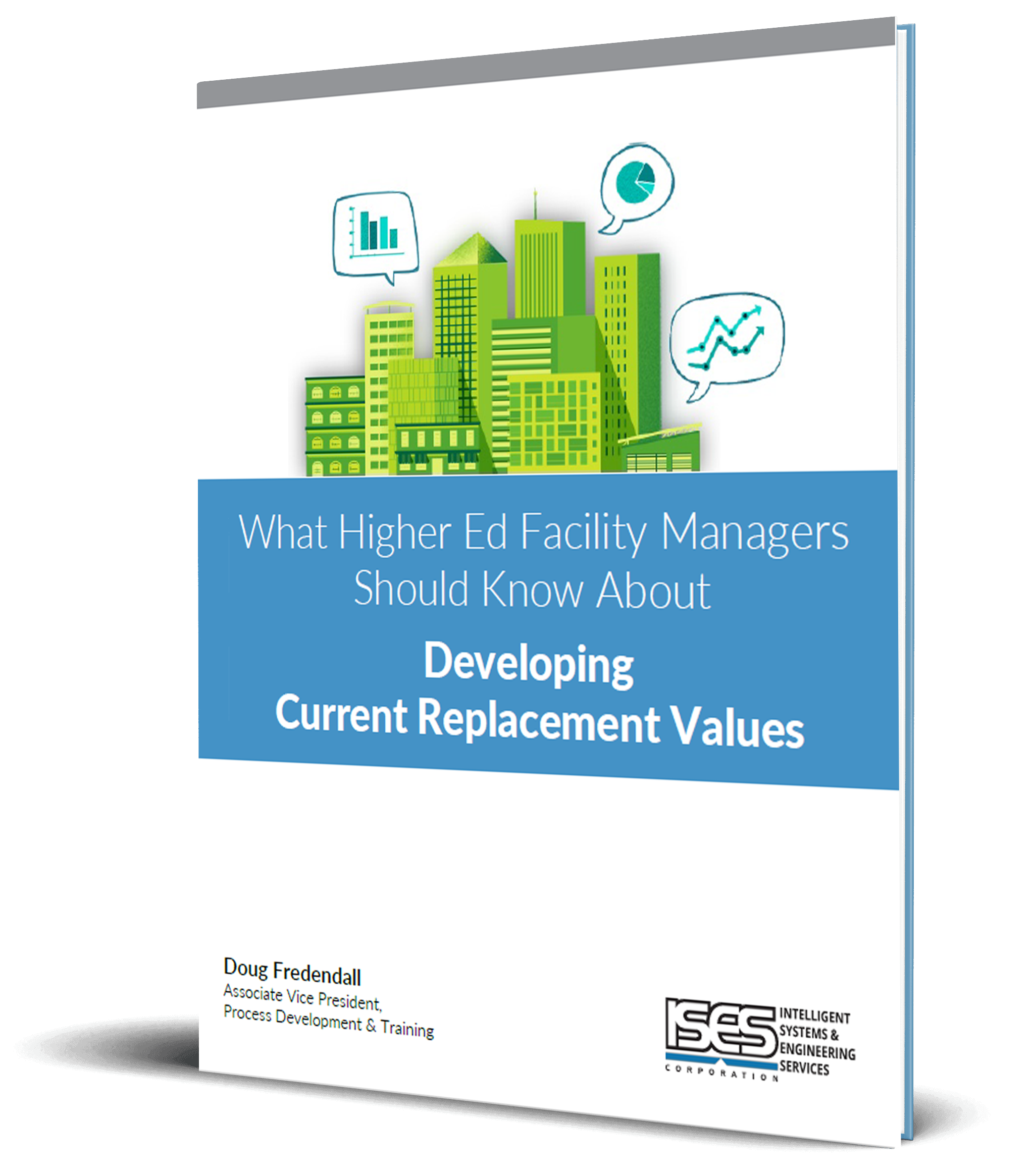As facilities professionals, we have an ethical and professional duty to protect building occupants and visitors during this pandemic. I am in contact with many conscientious frontline K-12 and higher ed facility managers tasked to prepare and operate their facilities during this crisis. While some of their efforts are experimental and have not been proven effective (since one must measure the impact of mitigation measures against a control to prove effectiveness), in many instances, neither have the recommendations of ASHRAE and other premier agencies writing standards and recommendations. Regardless, the overarching premises are reduced contact yields reduced spread and adding fresh air reduces tainted air within a building. Here are some client responses being implemented in K-12 and higher ed environments.
Facility Users
While many of these procedures may be familiar to facility managers, the fact remains that changing the behavior of building occupants and visitors is the lowest cost and perhaps most effective deterrent to SARS-CoV-2 virus spread.
- Daily screening procedures: Like retailers, educational institutions are developing policies for facility visitors and occupants. Some facilities are requiring self-assessments; others, especially campus medical and dental facilities, have security or medical personnel conduct health screenings at entryways.
 Self-assessments seem to consist of daily body temperature testing and responses to wellness questions. A subset has developed online questionnaires required of each person entering a facility. These record questionnaire responses, such as body temperatures, and provide a QR (or similar) code sent to the visitor’s smart device. The visitor presents the code to security personnel as evidence of health prescreening before entry. In some situations, lack of an online prescreen code disables the individual’s ID or access card, thus blocking entry.
Self-assessments seem to consist of daily body temperature testing and responses to wellness questions. A subset has developed online questionnaires required of each person entering a facility. These record questionnaire responses, such as body temperatures, and provide a QR (or similar) code sent to the visitor’s smart device. The visitor presents the code to security personnel as evidence of health prescreening before entry. In some situations, lack of an online prescreen code disables the individual’s ID or access card, thus blocking entry.
- Policies for facility and equipment use: Communication of mitigation strategies, often some version of the CDC, state, or local government policies, is common. They typically include personal conduct requirements, such as masking or social distancing, as well as handling of PPE, use of disinfectants, limits on sharing of vehicles, and instructions for use of communal equipment. Some clients are even increasing the minimum mask and distancing parameters beyond governmentally recommended ones.
Post policy procedures at building entries and in common areas. This is especially important when reopening or revising operational policy. In K-12 and higher ed environments, this is normally at entry/exit points for restrooms, locker rooms, cafeterias, dining halls, breakrooms, classrooms, conference rooms, mail dispensaries, financial aid centers, counseling centers, dormitories, and apartment-style dwelling units.
Other policy postings include use of drinking fountains and water coolers, lockers, shared storage elements, public work surfaces, shared office equipment, and interactive kiosks. These policies often include directions regarding use, handling, and disposal of PPE and related waste, as well as cleanup of touched surfaces after use.
- Schedule adjustments: We are seeing changes to classroom schedules to ensure lower density (and social distancing) in classroom facilities. This often means a reduction in the number of days a student is required to be in the classroom. Note that this frequently results in increased hours of operation and necessitates contact-free educational opportunities (web or distance learning).
- Capacity limitations: Our higher education and K-12 partners are limiting the number of visitors and meter their flow. This is typically managed by security personnel. The most common restriction for student housing is to halt siblings and limit access to one parent.
Equipment or Systems
We have seen a number of creative measures taken by our clients, who recommend the following steps.
- Air handlers and direct outside air systems: Operate at full code-allowable fresh air induction capacity (within the capability of the system to also control humidity and temperature) at least two hours before facility occupancy.
- Demand Control Ventilation (DCV): Disable DCV
 functionality of building automation systems. Such function reduces energy consumption but decreases ventilation appreciably, counter to current thought on disease control and prevention.
functionality of building automation systems. Such function reduces energy consumption but decreases ventilation appreciably, counter to current thought on disease control and prevention.
- Outside air quality monitoring sensors: Install sensors to be sure that increasing fresh air is actually improving indoor air quality. With almost all mechanical air quality and temperature control systems, there is a point of diminishing return when increasing ventilation. At this point, increased fresh air results in reduced indoor temperature and air quality.
- Cleaning and disinfecting: Aggressively clean all interior surfaces of air handlers, especially coils, coil bays, and surfaces downstream of the filters. This is not easy in internally insulated air handlers with fibrous insulation. For best results, reline air handlers with insulation surfaced with detergent, bleach, and moisture-impervious material to facilitate sanitizing.
- Crossover air exchange: Investigate potential crossover that may be occurring at energy recovery wheel deck boundaries. Crossover of air from the exhaust to the supply streams is a noted concern where an enthalpy wheel is used for energy recovery. This worry is eliminated with air-to-water energy recovery systems with glycol media thermal exchange because there’s no possibility of crossover air recirculation between the supply and exhaust.
- HVAC filtration: Upgrade filters to MERV-13 or greater. This MERV (Minimum Efficiency Reporting Value) rating captures 75 percent of particles 0.3-1.0 microns in size; a reasonable tradeoff between flow restriction and safety. Increased airflow and pressure are likely needed to overcome the static pressure changes caused by more restrictive filtration. This necessitates changing pulley sizes on air handlers or adjustments to variable speed motor controls or inlet vane damper controls. Where compensation cannot be achieved by mechanical adjustments, auxiliary electric space heaters and spot coolers are being used. An alternative to AHU filtration upgrade is the temporary installation of recirculating HEPA filtering devices within the spaces of highest concern.
- UV-C filtering banks: Use these for crucial supply air such as for medical applications. UV air purification and treatment systems have been around for more than 40 years for tool or personal device cleaning and purification of reagent solvents. Recently released ASHRAE standards indicate that a concentration of UV-C light at 1,500 microwatts/cubic cm is sufficient to kill the SARS-CoV-2 virus. Some facility managers are retrofitting crucial duty air handlers with this component. Keep in mind, though, that UV-C tends to rapidly degrade common filter media, so the light should not also illuminate that.
- Humidifiers in air streams: Reactivate or install humidifiers in air handlers or specific downstream branch circuits. As systems age, many building managers deactivate accessories like humidifiers because of operational cost, microbial downstream effects, and a desire to minimize energy costs. The CDC recently announced that maintaining media to slightly higher relative humidity seems to negatively affect the life of SARS-CoV-2 viral particles suspended in air.
- Unit ventilator fresh air dampers: Make certain these are functioning appropriately. They regularly become defective or are disabled as unitary equipment ages. Often this can go unnoticed, since each unit must be opened and cycled to be sure they are performing correctly. These vents are frequently the primary source of fresh air during hot summer months. If they are dysfunctional there will be minimal forced ventilation.
- Console fan coil units, unit ventilators, and classroom console air conditioners: Redirect effluent airflow to assure it does not blow on occupants. This can be as simple as attaching panel deflectors on louvered supply air registers to modify direction of flow, which we are seeing.
Facility managers are making changes to improve conditions and reduce liability through the school and higher education environment. We are in virtually uncharted territory regarding this level of disease control; after all, the last pandemic of this magnitude occurred in 1912. Experimentation and development of new technologies will lead the way to a safer indoor environment for all of us.


